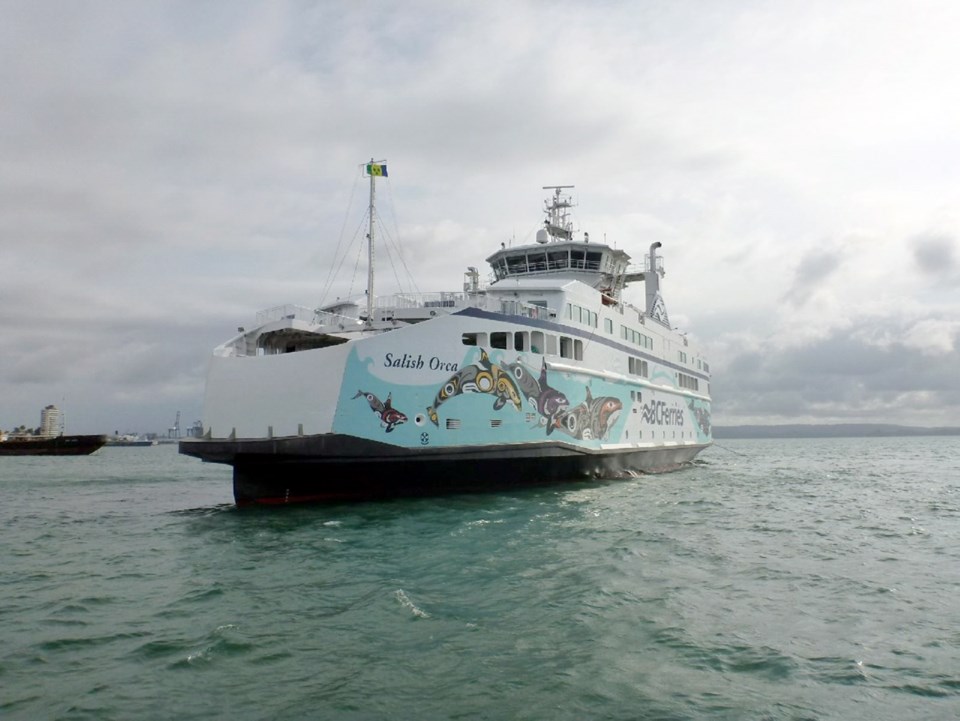The most practicable way to give B.C. shipyards a piece of impending new ferry construction is for local companies to partner with large offshore firms, says the executive director of the Association of B.C. Marine Industries.
Some kind of incentive or additional funding from the province is required for that to happen, Alex Rueben said Thursday.
This scenario could see the hull and steel components put together in a foreign yard where it is cost effective. The outfitting, systems integration and commissioning would be done in B.C. shipyards, supported by B.C. companies who specialize in such work, he said.
That’s the recommendation Rueben is taking to the province in the wake of May and June forums among B.C. Ferries, coastal shipyards and other industry representatives.
A report put together based on the meetings has gone to the B.C. Ministry of Transportation.
Blair Redlin, senior adviser for the coastal ferry review, attended a forum and has also received the report.
B.C. Ferries has announced it plans to replace its five C-class ferries, which carry up to 1,500 passengers and crew each. It is also looking to order up to five smaller ferries to serve inter-island routes. Further shuttle-style ferries are being considered.
“That’s a lot of work,” Rueben said.
Build ferries in B.C. to get a substantial spinoff effect in our economy, he said.
The five smaller ferries — likely four Island-class (about 300 passengers) and one Salish class (about 600 passengers) — could be built under a partnership arrangement with big foreign firms, provided B.C. agrees to some kind of financial support, Rueben said.
That could be configured in a number of ways, such as subsidies for yards through funding to adopt new technologies and new automated technology, to support training of workers, to develop supply chains in Canada, and tax incentives, the report said.
B.C. Ferries must abide by provincial legislation requiring it to get the best value for ferry users. That’s why Rueben is focusing on winning backing from the province.
B.C. shipyards used to build ferries for the province’s fleet.
B.C. Premier John Horgan and B.C. Ferries are saying they would like to see vessels built in B.C.
But there are constraints.
These days, major construction projects, worth hundreds of millions of dollars, typically go offshore because foreign shipyards have competitive advantages. They have lower labour costs, don’t have the same raft of health and safety rules as in B.C., and because they are constantly building new ships they have high productivity, Rueben said.
Canadian shipyards have found themselves at a further disadvantage when the federal government earlier decided to waive import duties for new passenger vessels.
Seaspan Shipyards has B.C.’s largest yard in North Vancouver but it is committed to turning out new non-combat ships for the federal government. While it has the size and a growing expertise in new construction, it is not immediately available.
That leaves smaller yards on Vancouver Island and the mainland, which are not large enough to build a big vessel, although it might be possible to build a smaller ferry.
B.C. Ferries normally seeks a design-and-build contract with shipyards. But by doing that, it cuts out small yards because they can not afford to develop their own designs, the report said.
That practice is changing with the upcoming smaller contracts. A B.C. Ferries official said this week that in the case of the smaller vessels, it will be sharing existing designs with local yards.
The Marine Industries Association’s report recommends that B.C. Ferries specify local products that could be supplied by B.C. yards for new ferries. Local yards could form consortiums and travel overseas to promote installing these products on new vessels.
B.C. Ferries could consider lengthening its delivery schedule to accommodate the capacity of smaller yards, the report said.
Consortiums of local and foreign yards could combine fabrication at each location, the report said.
It appears that large new ferries will not be built in B.C. in the near term, but the forum tried to come up with immediate ways to help local industry. One participant said: “Let’s take our strengths right now to work with foreign yards to see what can be done in partnership.”



